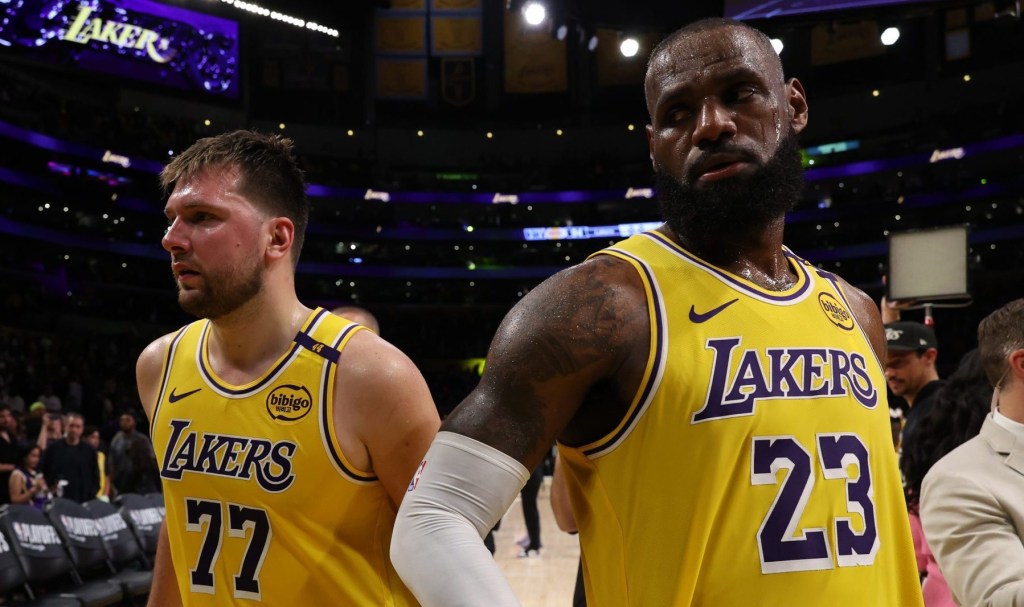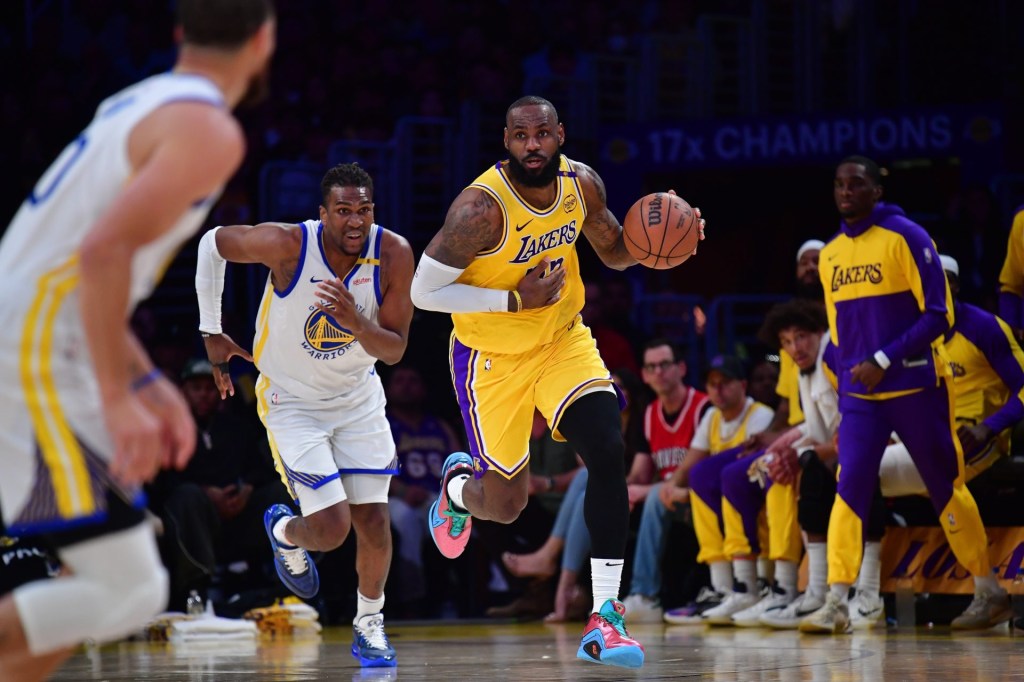Jalen Hurts walked into a postgame press conference in December 2024 wearing what would become the most viral piece of jewelry in pro sports last year: a diamond-encrusted pendant bearing his personal motto, “Breed of One.”
“So that’s what y’all wanted to see, huh?” the Philadelphia Eagles quarterback said as he took his seat in front of the cameras. He was talking about his performance—he threw two touchdowns and ran in a third that game—but the line very well could have been about the chain.
In the lighting of the press room, the Cuban chain and glittering pendant commanded the spotlight. It was jewelry as a statement: a period, a flex, a brand in all caps. A signature chain, custom pendant, or flashy grill can steal the show before an athlete even says a word.
The designer behind Hurts’s piece, New Jersey–based Gabriel Etoile, known by most as Gabriel the Jeweler, saw an immediate spike in demand. “A lot of people followed me, and a lot of new orders came in because of that video,” he tells Front Office Sports.
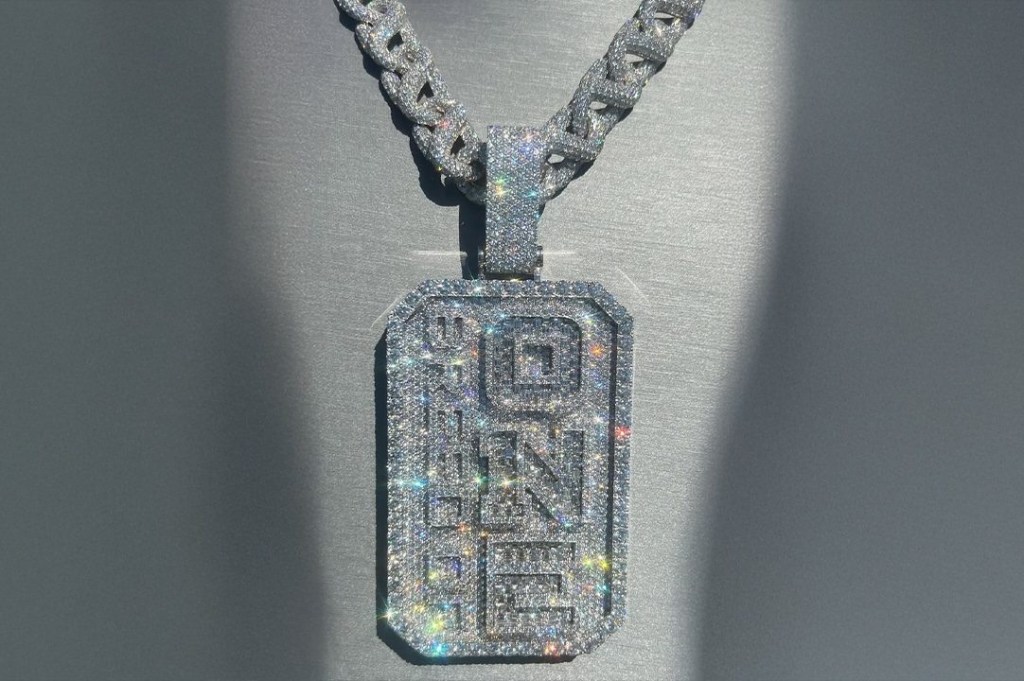
Etoile is one of a select group of high-end jewelers working directly with professional athletes to create custom pieces that serve not just as style statements but also as career markers and investments in personal branding. In an era of tunnel walks and NIL (name, image, and likeness) deals, eye-catching bling is becoming an increasingly visible part of the modern athlete’s image.
The NFL has particularly latched on—a “more is more” aesthetic prevails in the league, Etoile says. “We call it ‘helmet syndrome.’ Football players make a lot of money and work hard, but because they wear helmets, they’re not always easily recognized. That’s why they get into jewelry—to be seen.”
For NFL players, particularly those at the start of their careers, these high profiles out of the gate can be invaluable. On the NFL Draft red carpet, prospects arrived draped in diamonds and precious metals, each piece a preview of the brand they hoped to build. There were icy Cuban links thick as ropes, oversize logo pendants spelling out nicknames and mantras, and championship rings glinting on fingers. Abdul Carter (at top), drafted to the Giants, wore a massive chain with the letters “INCRDBL” around his neck, one of Etoile’s designs. Green Bay Packers first-round pick Matthew Golden debuted a palm-sized “G” pendant by the Houston jeweler ZoFrost, its yellow-gold base and shooting star details paying homage to his “Golden Child” nickname.
Usually, this kind of intricate custom project takes about two months to complete, says Etoile, but he can get a rush order done in two weeks. This goes for all clients, not just star athletes. “They always somehow need it quick,” he says. “Like, yesterday.”

“Jewelry is personal, and it makes you feel good,” says Jason Arasheben, founder and CEO of Jason of Beverly Hills, another go-to jeweler for players across every major pro sports league. “Now, with social media, it’s almost as important how you look walking into the stadium as how you play on the field.”
For Etoile, who says his client list now includes nearly 1,000 athletes, the sports world connection started with a single rookie: a college football player whose uncle was a trusted client. In the late 2000s, the jeweler took a chance and lent the player a few pieces while he was still at a major-conference program.
It paid off better than he could have imagined when the rookie got drafted by the New York Giants, whose stadium is just a 10-minute drive away from Etoile’s studio. “He didn’t even have a contract yet, but he showed up to the locker room in our jewelry,” he says. Other players took notice, and word of mouth brought in teammate after teammate.
Jewelry is often as much about trust as design. “The jeweler-client relationship can feel like that of a doctor or therapist—it’s deeply personal,” Janet Heller, a jeweler who works with Olympians including Simone Biles and Tara Davis-Woodhall, tells FOS. Heller prioritizes privacy and discretion, working behind the scenes even as her pieces appear on global broadcasts. When Biles wore Heller’s three-dimensional diamond ”GOAT” pendant during the Tokyo Games, it became a media sensation.
“It was pandemonium,” Heller recalls. “NBC called. Social media blew up. … I had no idea she would even wear it. That was one of the highlights of my career.”
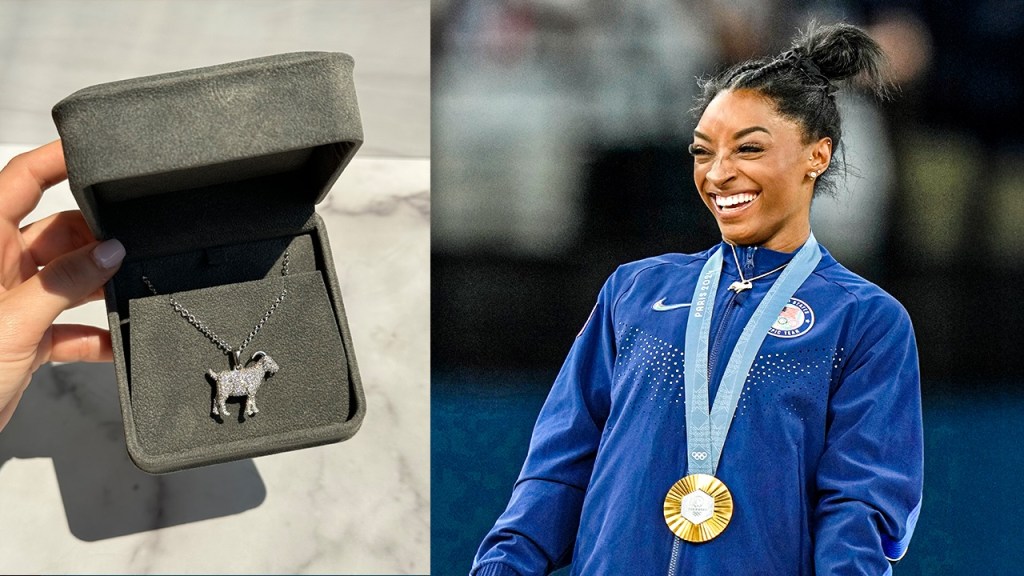
Several years before that breakout moment, Heller’s foray into sports jewelry began with long jumper Davis-Woodhall. The connection was personal—the track and field star had gone to high school with Heller’s daughter and reached out just before the 2020 Games to see whether Heller could make her a custom necklace featuring the Olympic rings.
That small commission opened what Heller calls “Pandora’s box” as other athletes took notice and began reaching out. “Tara is incredibly influential in that world, not just because of her talent, but also because of her relationship with Hunter,” says Heller, referencing Davis-Woodhall’s husband, Paralympian Hunter Woodhall, who has also purchased custom designs.
At the Paris Games, Davis-Woodhall won gold while wearing the rings layered with another Heller commission: a 14-karat gold-and-diamond silhouette necklace based on her signature long jump pose. The jeweler has since created similar pendants for other athletes, adjusting the design to reflect their individual specialties.
Athletes often want to wear their jewelry in competition, Heller says, which introduces challenges most jewelers don’t have to consider—like water pressure, aerial tumbling, or sprint landings. “A few of the swimmer pieces broke early on because of water pressure,” Heller says. “Once I made the chains thicker, we haven’t had any issues.”
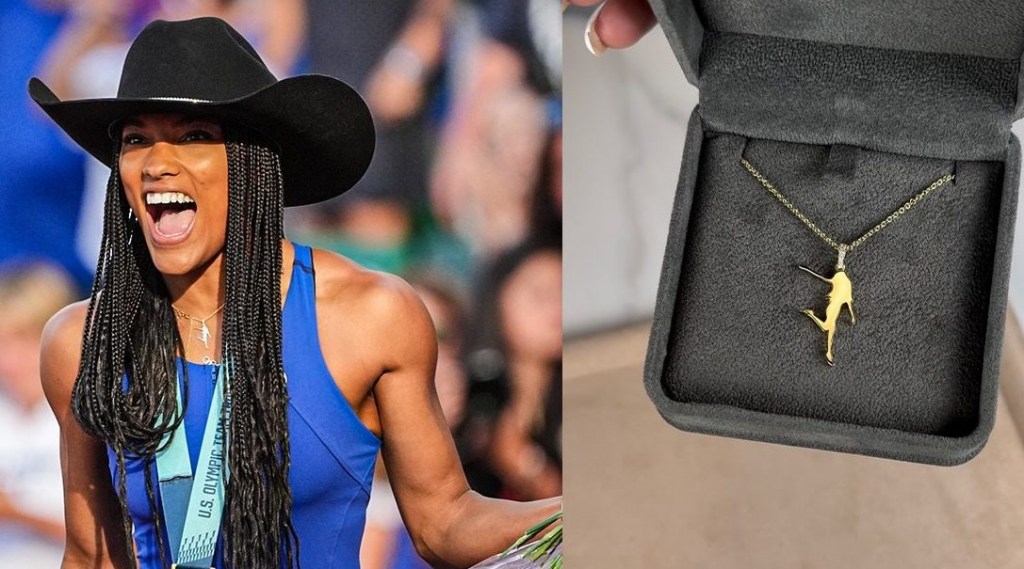
Her Olympic pendant design, worn by multiple athletes, had to be reworked to withstand movement. “The first chains were too thin for my liking, so I actually took a few back from athletes and remade them with stronger chains.”
Sometimes, a story belongs to a whole team. Arasheben’s studio is behind some of the most elaborate championship rings in recent memory, including the New York Liberty’s 2024 WNBA championship ring, a 110-gram ode to the city in white gold, diamonds, and Liberty-seafoam paraiba tourmalines, as well as eight of the last nine NBA rings and the Eagles’ forthcoming Super Bowl ring.
Arasheben has made rings with detachable compartments, hidden messages, and even pieces of stadium turf embedded inside. The Liberty’s ring has a pair of earrings tucked under the face. “The only way I broke into that space was by reinventing what a championship ring could be,” he says. “It has to tell the story of the team, the city, the season.”
His work with teams often starts with individual players, who become clients and ambassadors. This has been true since he got his start more than 20 years ago. “I didn’t have the money for big advertising,” he says. “So, I had to build my business on that first person who believed in me.” For him, that was the late Anthony Mason of the New York Knicks, who took a chance on a custom piece when Arasheben was a fledgling designer.

Those early custom pieces have evolved into sleeker, more intentional designs. “A player might ask for a pendant shaped like his hometown or a ring that marks a record. We bring those visions to life,” he says. One of his first designs for LeBron James featured a detailed back with a map of Ohio with a diamond star marking Akron, the basketball star’s hometown, and his date of birth. “We built a full narrative into it,” he says.
Despite the six-figure price tags some pieces carry, the jewelry business isn’t just about luxury. It’s about legacy. Etoile says he’s made pieces for athletes on tight budgets and others who’ve spent a half-million dollars in a single visit. Regardless of cost, the principles remain the same: quality, trust, and creativity.
“We never cut corners,” Etoile says. “If we can’t do it right, we won’t do it at all.”
Arasheben is especially conscientious of this today as lucrative NIL deals have brought in younger clientele—some even still in high school. “Now that kids are making millions before they even go pro, part of my job is education,” he says. “I talk to the parents. I help them make responsible choices. I don’t want to be part of someone’s financial downfall.”
As brand deals proliferate and athletes become entrepreneurs and media personalities, jewelry has become one more tool for image-making. “Athletes are learning to appreciate design more broadly,” says Arasheben. “They want their jewelry to reflect that.”
For Etoile, that expanding aesthetic has brought new opportunities—not just in football but also in global soccer. “Soccer players tend to want simpler designs,” he says. “In Europe, it’s not like America—there’s less of a culture around bold or oversized jewelry. It’s more low-key.”
Even so, he recently achieved one of his most ambitious goals: a custom, diamond-encrusted cross for Cristiano Ronaldo. “We thought it would never happen—700 million Instagram followers, global icon,” Etoile says. “But I made the connection through mutual friends, showed him my work, and he loved it.”
While the Portuguese soccer star’s style is more understated, the challenge excited Etoile. “We created something subtle but incredibly high quality. He even signed jerseys for my kids,” he says. “As a dad, that was one of the biggest moments of my career.”





